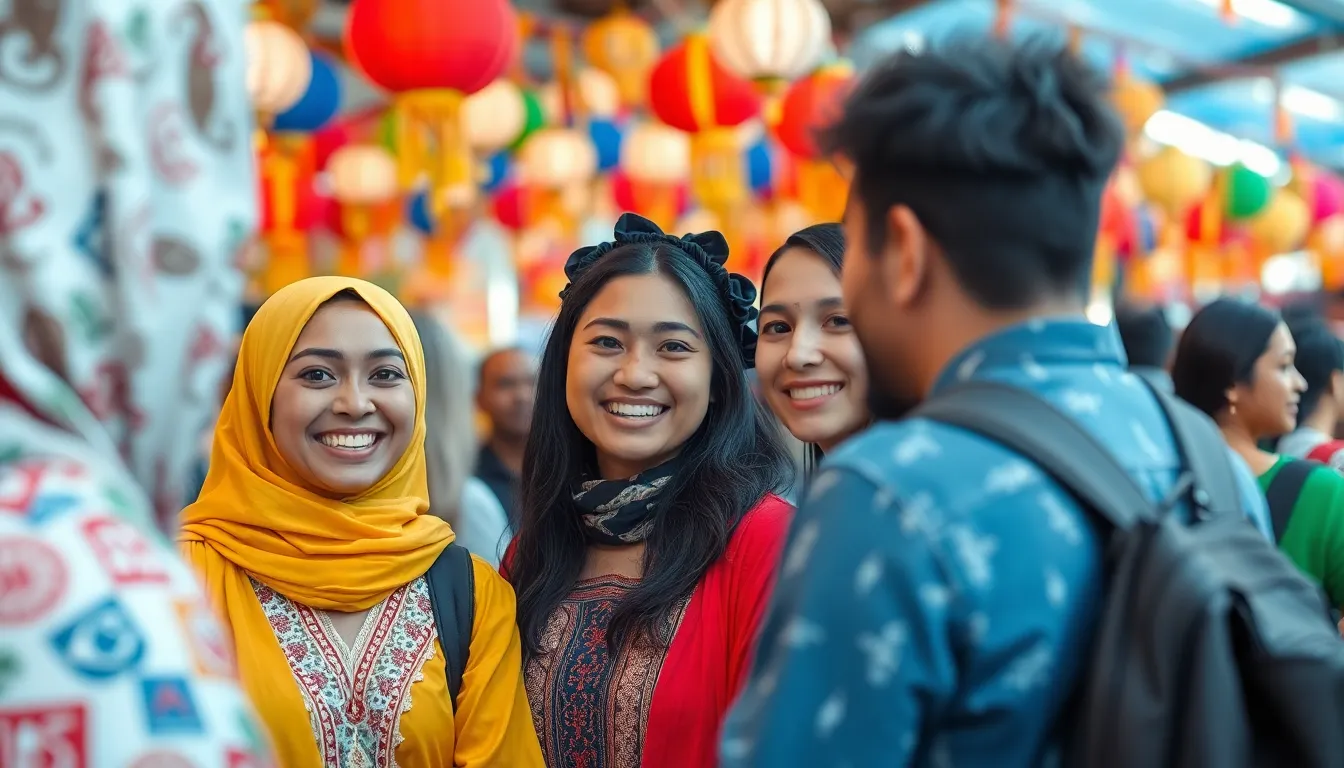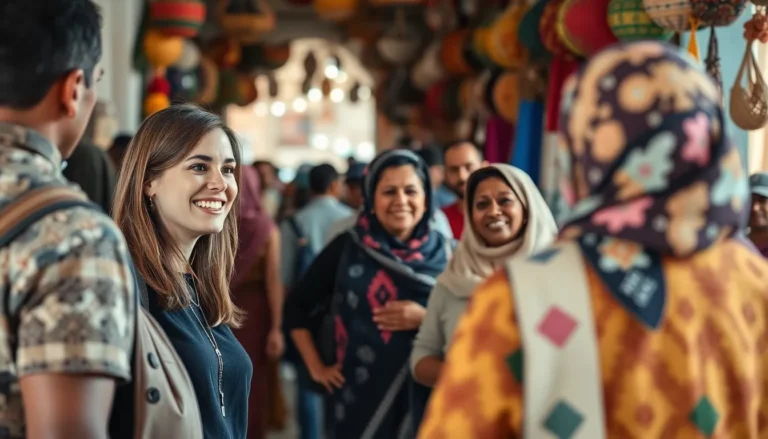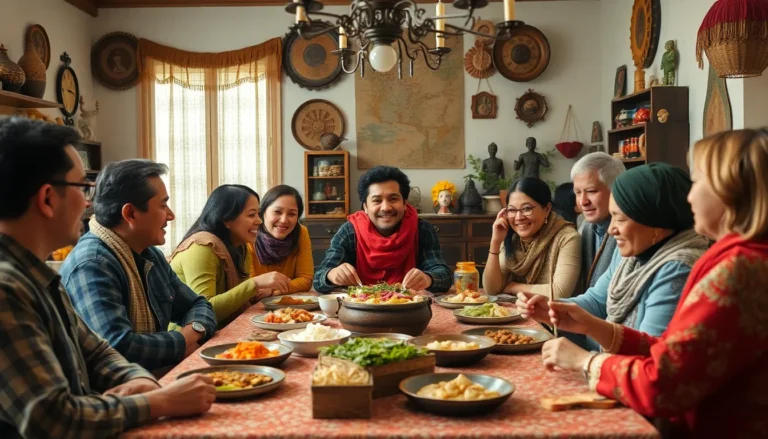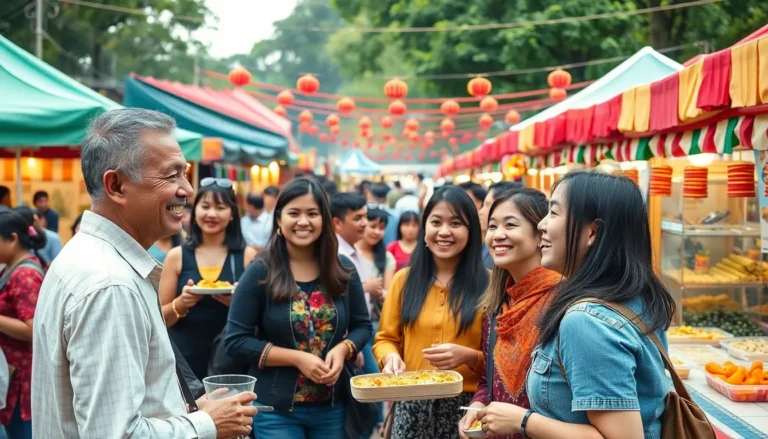Table of Contents
ToggleIn a world that’s more connected than ever, global culture is like a giant buffet where everyone can taste a bit of everything. From sushi to salsa, and Bollywood to Broadway, it’s a delightful mix that keeps life spicy. Who wouldn’t want to explore the vibrant tapestry of traditions, languages, and cuisines that shape our shared experiences?
Understanding Global Culture
Global culture represents an intricate tapestry woven from diverse traditions, practices, and beliefs. This interconnected experience spans the globe, offering individuals opportunities to explore various cultural elements.
Definition and Key Concepts
Global culture encompasses shared practices and values among people across different regions. It emerges from increased connectivity due to technology, migration, and trade. Concepts like cultural exchange and hybridity illustrate how local traditions blend with global influences. Common elements include languages, cuisine, arts, and customs that transcend borders. Each cultural facet influences and enriches others, creating a vibrant shared human experience. For example, culinary traditions provide a platform for cultural fusion, allowing people to taste and appreciate various cuisines worldwide.
Historical Context
Historical events shaped the evolution of global culture. Trade routes established cultural exchanges as societies interacted. The Silk Road epitomized this early cross-cultural engagement, facilitating the flow of goods, ideas, and practices. Colonization further influenced global culture, intertwining diverse cultural practices, albeit often unbalanced. The rise of globalization in recent decades accelerated cultural interaction among nations, driven by advancements in technology and communication. These historical factors laid the groundwork for the contemporary global culture, characterized by its dynamism and continuous evolution.
Influences on Global Culture

Global culture experiences significant shifts driven by various influences. The interconnectedness of society fosters a rich cultural exchange.
Technology and Communication
Technology transforms how people engage with culture around the world. Social media platforms connect individuals, allowing for real-time sharing of cultural practices. Streaming services provide access to international films and music, broadening audiences beyond geographical boundaries. Innovations like video conferencing enable cross-cultural communication, fostering collaborations that enhance understanding. Mobile technology also ensures that cultural content remains accessible, leading to greater awareness and consumption of diverse traditions. The rapid dissemination of information furthers the blending of cultures, creating new forms of expression that reflect a globalized worldview.
Migration and Travel
Migration significantly enriches global culture by introducing diverse perspectives. Individuals relocating for work or education carry their cultural heritage, influencing local customs and traditions in their new environments. Travel offers opportunities for cultural exchange, enabling people to experience different lifestyles firsthand. Cultural festivals globally showcase the vibrancy of various traditions, encouraging participation and appreciation. Temporary migrations, like study abroad programs, further contribute to a shared human experience. Through these interactions, communities become more adaptable and open to integrating different cultural elements.
Examples of Global Culture
Global culture manifests through various expressions, reflecting shared human experiences across the globe. Key examples include food and cuisine, as well as fashion and lifestyle.
Food and Cuisine
Food serves as a major touchpoint for global culture. Traditional dishes from different regions like Italian pasta, Indian curry, and Japanese sushi gain international popularity. Street food markets exhibit diverse offerings, drawing inspiration from local and global flavors. Additionally, fusion cuisine blends elements from different cultures, showcasing the dynamic nature of food. Chefs worldwide adopt techniques and ingredients that create unique culinary experiences. Restaurants often tailor menus to reflect global influences while maintaining local authenticity.
Fashion and Lifestyle
Fashion exemplifies the exchange of cultural ideas and aesthetics. Designers frequently draw inspiration from global styles, incorporating traditional fabrics and patterns into modern collections. Cultural events like Fashion Weeks in major cities showcase diverse talent and ethnic representations. Street style reflects a mix of influences, where individuals express their identity through combined elements from different cultures. Lifestyle choices, including wellness practices or home decor, often blend traditions from various backgrounds, promoting a global mindset. This interconnectedness in fashion and lifestyle highlights the shared aspects of human creativity and expression.
Challenges Facing Global Culture
Global culture experiences several significant challenges that affect its evolution and diversity. Two major concerns include cultural homogenization and the preservation of local cultures.
Cultural Homogenization
Cultural homogenization poses a serious threat to global culture. This phenomenon occurs when dominant cultures overshadow local traditions. Global media and corporations often promote a narrow range of cultural expressions. As a result, unique identities may fade as global influences take precedence. For example, fast-food chains and popular music genres gain immense popularity, overshadowing traditional foods and musical forms. The challenge lies in balancing widespread cultural access with the need to maintain the richness of individual cultural identities. Communities frequently struggle to assert their unique voices amid this tidal wave of sameness.
Preservation of Local Cultures
Preserving local cultures represents a crucial element of sustaining global culture. Local traditions, languages, and practices offer invaluable perspectives that enrich the global tapestry. However, the pressures of modernization lead to the risk of cultural erosion. Many communities work tirelessly to safeguard their heritage through education and cultural initiatives. Efforts such as language revitalization projects and cultural festivals help maintain traditions and promote awareness. When people actively engage with their cultural roots, vibrant local practices can coexist with global influences. Protecting these cultural treasures ensures that diverse narratives continue to thrive in an interconnected world.
Global culture represents a vibrant tapestry of interconnected traditions and practices that enrich human experience. As individuals navigate this diverse landscape they encounter a multitude of perspectives that foster understanding and collaboration. The dynamic interplay of local and global influences shapes contemporary culture while highlighting the importance of preserving unique identities.
As communities engage with their cultural roots they create a balance that allows for both global access and local authenticity. This ongoing dialogue between cultures not only enhances creativity but also ensures that diverse narratives continue to thrive. In embracing this rich exchange of ideas and traditions the world can cultivate a more inclusive and harmonious future.







